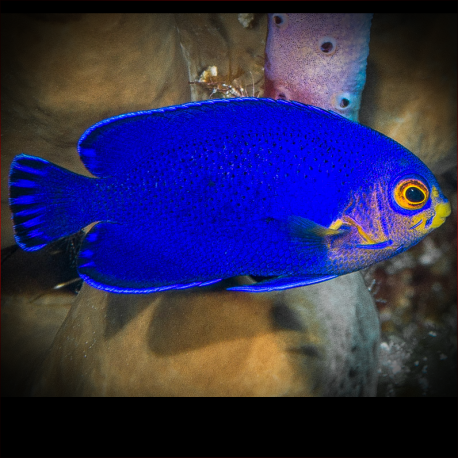More info
Datasheet
| Minimum Tank Size | 200 litres / 52.83 US gallons |
| Maximum Size | 8.0cm / 3.15inches |
| Reef Compatible | Often reef safe |
| Temperament | Aggressive towards other species |
| Temperature | 22.2°C / 71.96°F - 25.6°C / 78.08°F |
| Specific Gravity | 1.020-1.025 |
| Carbonate Hardness | 8-12 |
| pH | 8.1-8.4 |
General Description
The Cherubfish (Centropyge argi) is a member of the Pomacanthidae family, specifically a Dwarf Angelfish, known for its vibrant colors and compact size, typically reaching lengths of about 10 to 18 cm. These fish are popular in aquariums due to their smaller size compared to other Angelfish species and their striking appearance. They are primarily herbivores, feeding on microalgae and detritus, with some species also consuming green hair algae as part of their diet. However, caution must be exercised as they may disturb certain LPS, Zoanthus, and clams in a reef aquarium.
Aquarium Suitability
With a temperament categorized as aggressive towards other fish species, caution is advised when keeping Cherubfish with peaceful or docile species. To minimize aggressive behavior, it is recommended to provide regular feeding, ample hiding spots, and sufficient space in the tank. Cherubfish are suitable for aquariums with a minimum size of 200 liters but require careful consideration due to their aggressive nature.
Demands, Care, and Hardiness
Cherubfish have an average level of hardiness and are often not reef safe, as they may prey on soft corals and LPS. Maintaining a well-established aquarium with algae-rich surfaces is beneficial for these fish. They require frequent feeding, especially when newly introduced, and may nibble on clams, including Tridacna species. These fish can change their gender from female to male, exhibiting hermaphroditic behavior.
Reef Suitability
While some species of Cherubfish may not disturb coral polyps, they have a tendency to consume coral-produced mucus, which could harm certain corals. There is a level of unpredictability regarding their reef compatibility, and careful consideration is necessary when adding them to a reef aquarium. Specific species may have a reasonable chance of success in a reef setting, but it is essential to monitor their interactions with corals closely.
Aquarium Setup
When setting up an aquarium for Cherubfish, ample hiding places should be provided, especially for newly introduced individuals. The tank should ideally include algae-covered rocks and stones for grazing. It is recommended to feed them a varied diet, including microalgae such as Spirulina, to ensure their nutritional needs are met. Water quality must be maintained at a high level to prevent stress in the fish, particularly during times of introducing new tankmates.
Behaviour
Cherubfish exhibit aggressive behavior towards other fish species and may require space and hiding spots to alleviate aggressiveness. The fish should be observed closely, especially during the introduction of new tankmates, to monitor any potential conflicts. They are known to graze on algae from surfaces within the tank and may exhibit territorial behavior at times.
Feeding and Diet
Their diet primarily consists of microalgae, with some species also consuming green hair algae. Offering food rich in algae content, such as Spirulina, is beneficial for their overall health. Cherubfish may require several feeding sessions throughout the day, especially when adjusting to a new environment or when additional stressors are present in the tank.
Dimorphism and Captive Reproduction
Cherubfish can change gender from female to male as a natural biological process. In captivity, these species have been successfully bred, making captive-bred specimens available through certain local fish stores. Careful consideration of their gender dynamics and reproductive behaviors can enhance breeding success in a controlled environment.
Habitat and Distribution
Cherubfish are native to regions such as Japan, the Gulf of Mexico, and Indonesia, where they inhabit reef environments. These fish are commonly found among coral reefs, feeding on microalgae and detritus within their natural habitat. Understanding their natural behaviors and habitat preferences can aid in creating a suitable environment for Cherubfish in a captive setting.

